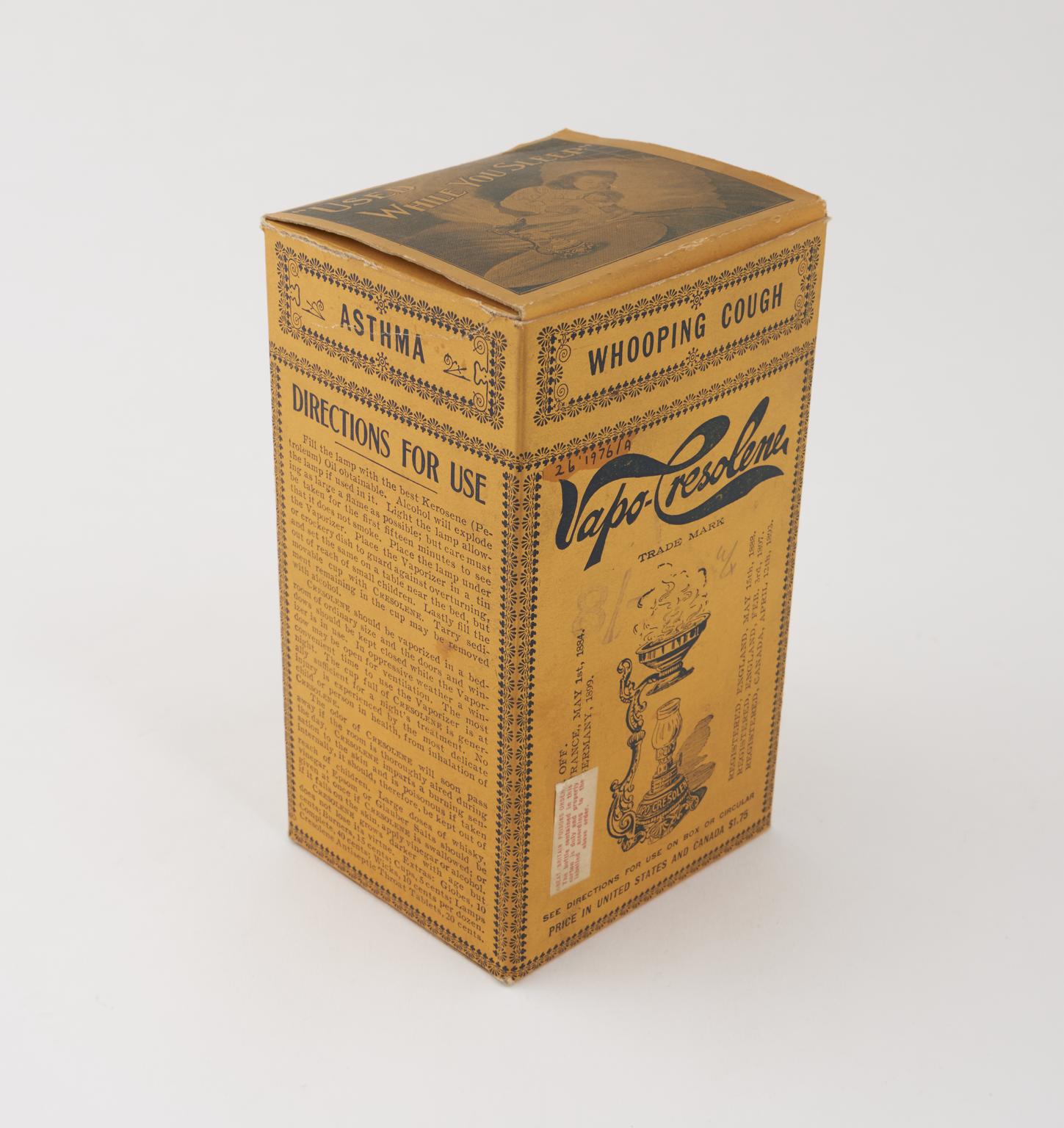Paper advertisement for the Cresolene vaporiser
Paper advertisement for the Cresolene vaporiser

Vaporizer consisting of lamp and stand, for the treatment of respiratory complaints, in original carton with advertisement, by Vapo-Cresolene Company, U.S.A. 62 Cortlandt Street
This vaporizer produced fumes which, when inhaled by the patient, were claimed to treat diseases and conditions associated with the lungs and airways, such as asthma, bronchitis, whooping cough and croup. The lamp was first filled with paraffin, which was lit and then placed underneath the dish. This dish was filled with Cresolene, a type of antiseptic, and as it was heated it gave off strong smelling fumes. Other products could also be vaporised in this way, such as the opium-based oils used to treat asthma.
The vaporizer was designed for use at night while the patient slept and had to be placed on a plate to prevent it falling over and potentially starting a fire. The vaporizer was primarily for human use, but the makers claimed it could also be used to treat animals and poultry. This device was one of a wide range of patented medical items that were increasingly available to the public towards the end of the 1800s. It was recommended for use both in the popular and the medical press, and in North America – where makers the Vapo-Cresolene Company were based – the vaporiser cost $1.75 (equivalent to £23.50 today).
Paper advertisement for the Cresolene vaporiser
Vaporizer consisting of lamp and stand, for the treatment of respiratory complaints, by Vapo-Cresolene Company, U.S.A. 62 Cortlandt Street

Original carton for Vaporizer consisting of lamp and stand, for the treatment of respiratory complaints, by Vapo-Cresolene Company, U.S.A. 62 Cortlandt Street